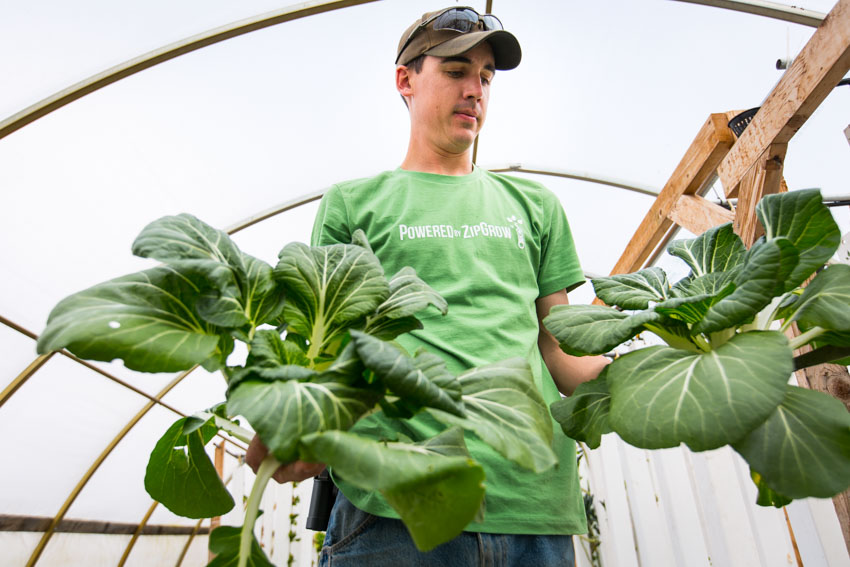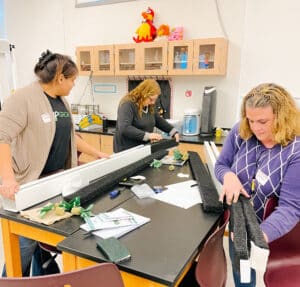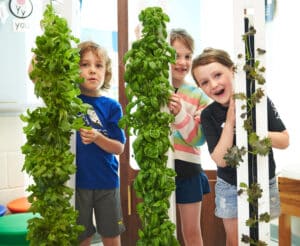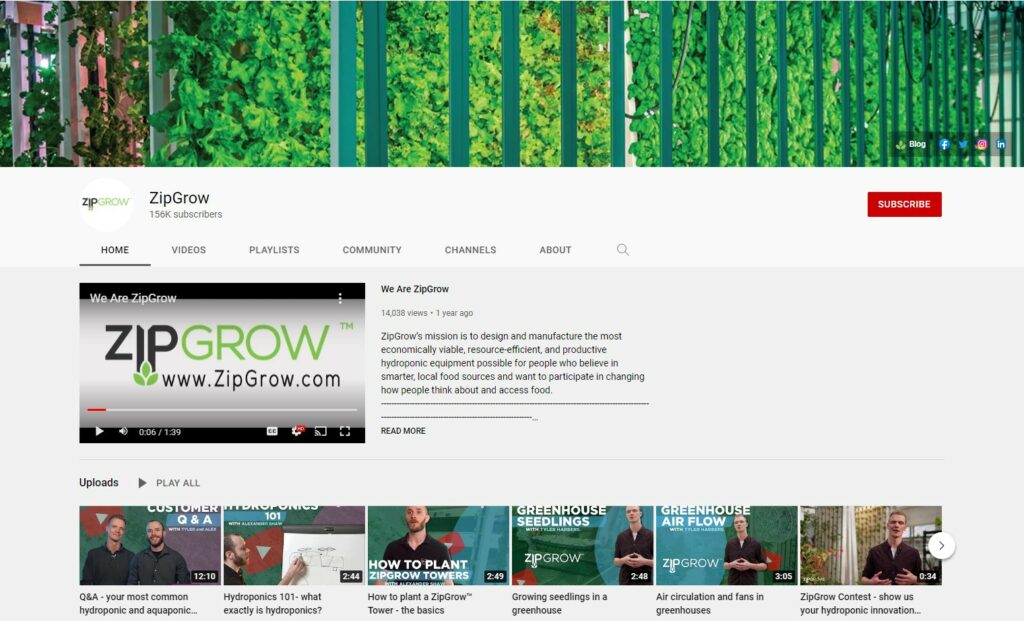If you’re planning a greenhouse, then you know how much climate will impact the heating and cooling of your greenhouse. Growers can control temperature despite climate by having a properly sized HVAC system and by choosing the right structure and and covering.
Before jumping into structure and covering, we have to understand that the structure type determines whether or not your greenhouse needs a foundation.
Foundations
A lot of websites and blogs are going to tell you that you need to build a solid foundation and suggest that a permanent structure is the only way to go, but we encourage you to cast aside that rule and ask yourself if you really need a foundation. Without a foundation, you can significantly decrease costs.
For one thing, a temporary building permit is usually much cheaper than a permanent one. Maybe you’re thinking, “but I won’t be able to support a real greenhouse without a foundation!” Think again- high tunnel (Quonset) structures don’t require a foundation and come in sizes that can facilitate large aquaponics systems.
If you don’t believe us, watch this virtual tour of our greenhouse and see for yourself.
Choosing a Greenhouse Covering
There are four factors that go into choosing a covering:
Lifespan
Regardless of what kind of covering you choose, you will need to do maintenance and eventually you’ll need to replace it.
A double layer of the polyethylene we use will last five or six years before we have to replace it, and after two years we haven’t had to mend many cracks or holes. (When we do get tears in the covering, we simply mend them with clear duct tape, which is cheap and does the job just fine.)
Keep the lifespan of the covering in mind when you are thinking about pricing- it may cost half as much, but if you have to replace it three times as often, it will be more expensive in the long run.
Budget
Price is going to be dependent on the type of material used.
Glass, acrylic, fiberglass and poly carbonate panels are going to be the most expensive, and will not fit on a high tunnel’s rounded roof well.
A film covering such as polyethylene is much cheaper and can be ordered with UV and thermal protective coatings, still at a cheaper cost than most panels. Polyethylene is the choice covering for most greenhouse builders.
R-Value
Different coverings offer different R-values.
What is R Value?
R-Value = (Temperature Difference x Area x Time) / (Heat Loss)
Essentially, the R value is a measure of how well a material can hold heat inside your greenhouse, and is a good way to tell how well a covering will insulate. The higher the R value, the better the material is at insulating. (Learn more about R-values here.)
There are five main coverings you can use to cover a greenhouse structure:
- glass,
- plexiglas,
- polyethylene,
- polycarbonate,
- and acrylic.
Some of the non-rigid materials can be applied in double- or triple-layers.
We use an inflated double layer of polyethylene that gives us an R value of 1.7, which we find to be adequate for our needs.
Light Transmittance
A covering will let through either diffused or non-diffused light.
Non-diffused light waves pass straight through the covering and continue in the same direction.
Diffused light waves get scattered as they pass through the covering, which bends them all different directions.
Diffused light is preferable for plant growth because when the light waves are coming in at all different directions, plants have more opportunities to absorb them.
If you are growing vertically, diffused light will provide the same amount of light to the plants on top as to the plants on the bottom of your towers.
Film vs panels
Films can be used on almost any frame (a dome could be tricky), but panels are more limited.
Some plexiglas panels are flexible enough to fit over a slightly curved roof, but most panels incompatible with high tunnel type greenhouses.
We advise you to forget about panels, unless you’ve got the budget for the initial investment and maintenance costs. Glass, plexiglas, rigid acrylic- the cost and upkeep isn’t worth the benefit.
Use a high tunnel with a film fitted over it.
How much heat will you need to supplement?
Some people buy heaters based on the number of square feet, but that doesn’t take into consideration the other factors that change the temperature of your greenhouse, such as insulation and changing weather.The first thing you need to do before you decide on a heating method (post on heating and regulation coming soon, by the way) is find out how much heat you will need to produce.
There are calculations that will give you the number, but don’t worry- you won’t have to do any math today.
There are several online calculators that will do the work for you. (Like this one.)
The calculator will ask you to fill in the type of covering you use, the square feet, and the temperatures inside and outside. When you fill in the temperature inside, this should be the temperature you want.
We keep our greenhouse at 70 – 75 degrees Fahrenheit. When you enter the outside temperature, enter the lowest temperature that your area will experience.
The number that you end up with will be in BTU’s – British Thermal Units.
You will want to buy a heater that can produce that amount of BTUs so that you know you will be able to heat your greenhouse in the coldest part of the winter.
Heating and temperature regulation methods
Common heating methods
Different heaters will use different fuels. Fuel cost partly depends on where you live, so be aware of fuel prices in your area.
Wood
A wood burning stove or a wood-burning boiler can be very economic if wood is abundant.
We use a wood-burning boiler because although the boiler’s initial cost is high, wood is cheap around Laramie.
Also, the boiler can be very powerful, which our climate requires.
Natural Gas or Propane
Gas could be the cheapest option for you.
Heaters that use propane natural gas are forced-air heaters, boilers, or vented/non-vented gas heaters.
*Be warned: If your greenhouse structure isn’t already close to natural gas lines, it could cost you a pretty penny to have them installed.
Electric Heaters
Initially, electric heaters are cheap to install, but in the long run end up costing a lot in electricity bills.
If you are only supplementing heat a few times during the winter, this may still be a good option for you.
If you live somewhere like Laramie, on the other hand, electric heat isn’t an option.
Electric heaters usually come as space heaters, overhead heaters, ceramic heaters, and some boilers.
Temperature regulation methods
Regulation can be a good investment in efficiency by buffering drops in temperature. However- regulation is not heating, and unless you live in a rare type of climate or grow seasonally, you will need some kind of heating.
Heat Sinks
We’ve heard of using buckets of water or sand bags with black fabric as “sinks.”
The sink collects heat during the day and slowly releases it at night, extending the hours of warmth. These work with varying levels of success depending on whether there is enough sunlight where they are placed and the material you are using.
Insulation
Insulation can mean a double layer wall, insulation in the ground or horticultural fleece. Some people even use bubble wrap.
Think about insulating the wall, but also using insulation as a curtain for heating only part of your greenhouse.
Compost or Manure
Many people keep a compost heap in their greenhouse, or dig a hole or trench in the greenhouse floor to hold compost or manure. (Learn how to here.)
Earth Batteries
Our good friend JD Sawyer over at Colorado Aquaponics uses earth batteries in his commercial greenhouse to regulate temperature.
Basically, he is drawing warm air from near the ceiling and channeling it through tubes in the ground, which act as a heat exchanger.
Air Flow
Regardless of where you live and what crops you are growing, airflow will improve your growing environment by providing consistency, as well as supplying the nutrients plants need from the air.
You can use the wind if you like, but you should also have a fan for those days when the wind isn’t blowing or is too dry/humid.
Your specific circumstance may provide a unique heating or regulation opportunity. Be creative!
Planning a greenhouse?
Planning out a greenhouse can be confusing work. Rather than getting stuck bouncing from website to website, check out the Greenhouse Bundle; one source that encompasses design, cost, and production of a 1000 sq ft greenhouse.






